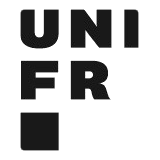This lecture will systematically cover the fundamentals of modern solid state physics. We will not only tackle in details the necessary mathematical tools and equations, but will also discuss the related experimental phenomena and techniques.
We will start covering early and simple models of the electronic properties of solids along the lines of the Drude and Sommerfeld models.
We will then introduce the concept of Bravais lattices and explore briefly notions of crystallography. This will allow us to describe the reciprocal space, essential to understand how the crystallographic structure of solids can be measured by diffraction techniques.
We will then spend a few weeks on describing the dynamics of crystal lattices and bring it to the quantum world by introducing the notion of phonons and their thermodynamical properties. This will be a first important part of the lecture.
We will then attack the second important part with the fundamental modern tool to describe the electronic structure of solids. We will start with the nearly free electron model and then the tight binding model.
The third big part of the lecture will be dedicated to the transport properties of solids. For this purpose, we will discuss the semi-classical model of electrons in solids. It will allow us to describe cyclotron orbits and Landau levels. We will also discuss the thermoelectric properties of solids using the Boltzmann equation.
Finally, we will end our journey with the description of semicondcutors and releated devices.
- Docente: Claude Monney
- Docente: Joël Morf
- Docente: Chennan Wang
